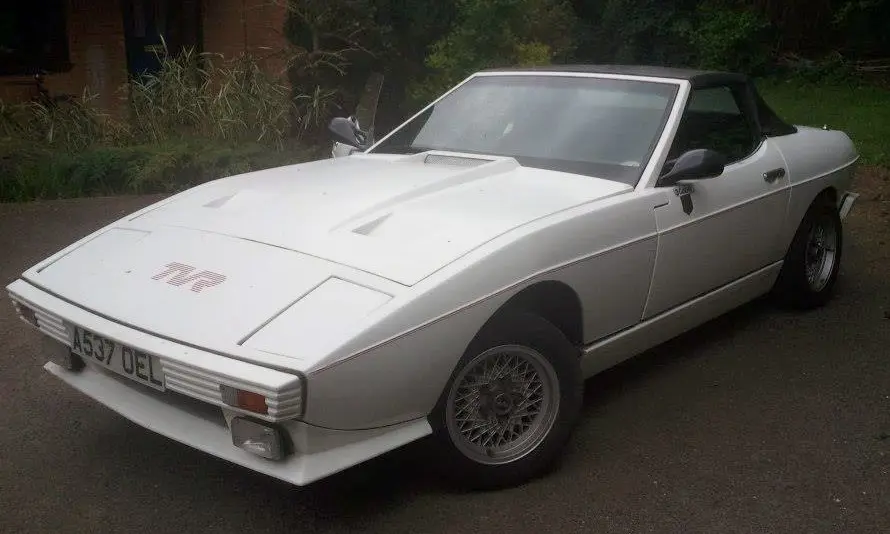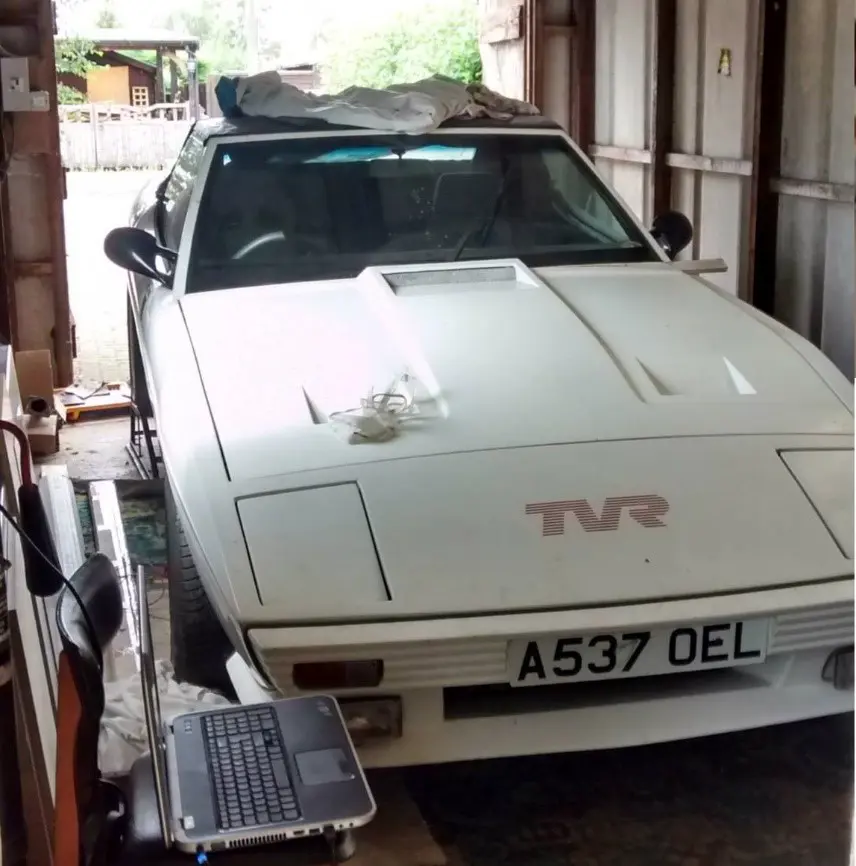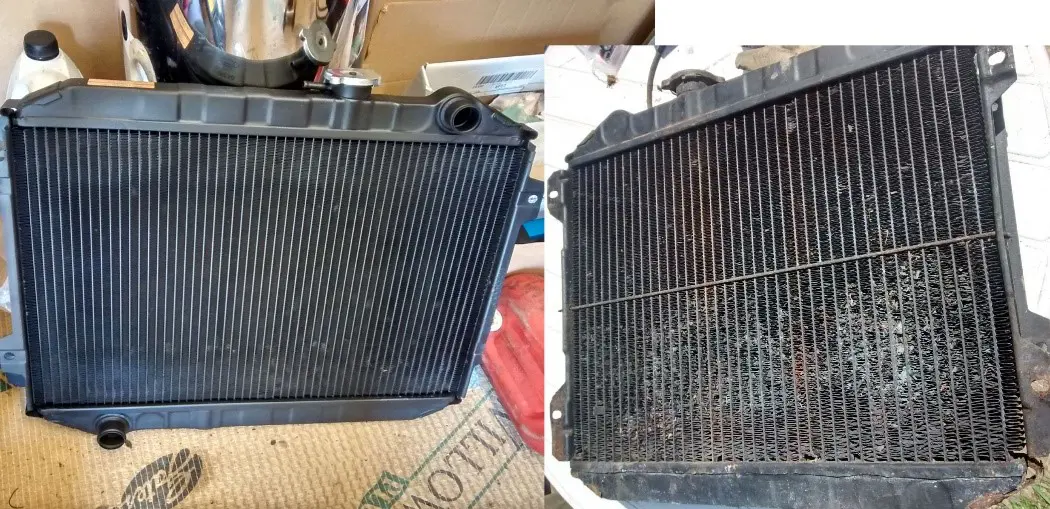Staff Car Stories – Our Car Club Liaison Aaron Prior bought a 1983 TVR 280i –What could possibly go wrong?
26 August 2022
At Lancaster Insurance, we’re lucky to have a team full of car enthusiasts, who love classics just as much as our customers. One such enthusiast is our Car Club Liaison Aaron Prior, the proud owner of a 1983 TVR 280i. However, as we all know, owning a classic is full of ups and downs, as Aaron explains…
Purchasing a project TVR sight unseen from eBay for a suspiciously low sum of money may not seem like the greatest idea to have ever graced this earth, but that is exactly what I did back in 2013. The intent of my purchase was to get an easy “one-year” project to finish quickly, that would allow me to develop my mechanical skills at the same time. That journey did not quite work out as planned but has led to a wealth of experience.

The car the day it was delivered and the first time I had ever seen it in person.
Back in 2013 I decided that I’d like a classic car, specifically an older TVR, more specifically a project TVR. I had been a fan of the marque for a while, and although a Griffith or Cerbera were wildly out of budget an older wedge or S series car was very much on the cards. I decided to delve into the depths of eBay to look for an appropriate car and resurfaced having purchased a 1983 TVR 280i non-runner for just over a thousand pounds without having ever seen it. At this point some doubts were starting to creep in, nevertheless, I pushed forwards and arranged for it to be delivered from its then current location 146 miles away to temporary storage at my in-law’s house. A week or so later it arrived, and I got my first chance to check the car over.
My initial inspection yielded mildly positive results. Cosmetically the car wasn’t too bad at all, definitely not perfect, but a good polish and it would come up wonderfully. Mechanically things were much worse, the fuel pump was dead, the accumulator was hanging on for dear life, the radiator had seen better days and the fuel distributor appeared to be completely clogged. But the engine turned freely, and a few other items appeared to be in good condition, so I was not too disheartened.
The biggest thing with these cars is the chassis. Being a fibreglass body resting on a steel chassis it is very easy for rust to remain hidden for a long time and for big bills to spring up as a result, most commonly the chassis outriggers rot and have to be replaced. Uncharacteristically I had struck gold in that particular department, as although the chassis didn’t look very nice aesthetically due to a lack of paint and a build-up of surface rust, it was completely solid. Things were looking reasonably positive, even if the car didn’t run.
After the delivery of the car, my dad and I attempted to get the car running on several occasions after replacing the fuel pump and filter, but the car refused to co-operate and work stopped temporarily as life got in the way. 12 months later the car had been moved to my house and work began in earnest. The car was jacked up and put on ramps to allow me to start cleaning the chassis and repainting it, whilst also allowing us to inspect the various fuel lines and components hidden under the car more closely.

Eventually we got back to seeing about getting the engine running. We decided not to trust what were most likely the original fuel lines (old rubber hoses being a common cause of fires in classic cars) and rigged up a temporary fuel tank along with fresh fuel lines. A new distributor cap and spark plugs were also acquired at this point. Once the car was safely returned to ground level, we had a series of very frustrating winter evenings over the course of two months, with the car refusing to do more than briefly cough and sputter to life before dying.
We had a breakthrough in December 2014 and the car finally announced its presence very loudly to my, surely overjoyed, neighbours. Unfortunately however, although we had got it running, the car was badly misfiring and definitely not running on all six cylinders and was put to bed until the spring so that we could brainstorm ideas.
Once the spring hit we made pretty rapid progress, a refurbished fuel distributor was purchased to replace the ailing original, a new fuel accumulator, along with getting the radiator refurbished and replacing the thermostat. After fettling with the fuelling, the car would now quite happily idle and rev without issue and we were even able to get it to drive backwards and forwards slowly on the driveway. Things felt like they were really coming together at this point and that the end was in sight, oh how naïve I was.

The next issues on the list were the barely functional brakes and the fact that I was unable to reach much of the chassis to clean it from underneath, the suspension was also looking tired, with the car very clearly needing a new set of bushes and shocks. It was at this point that I made the decision to make things much more difficult and expensive for myself and change this from a light mechanical rejuvenation to a full body-off restoration.
This was the start of a long process and the acquisition of many new skills (and tools) over several years. Stay tuned for part 2 in next month’s edition, the chaos of removing the body and what we find lurking underneath will be revealed….
